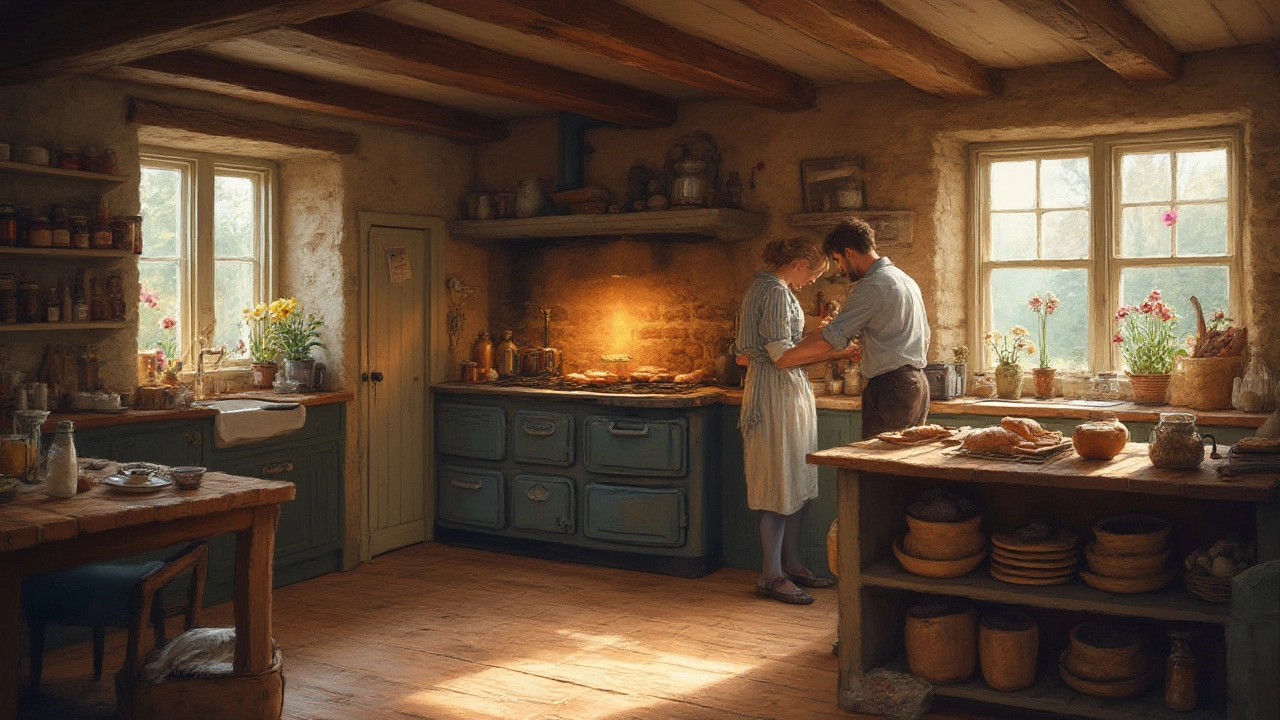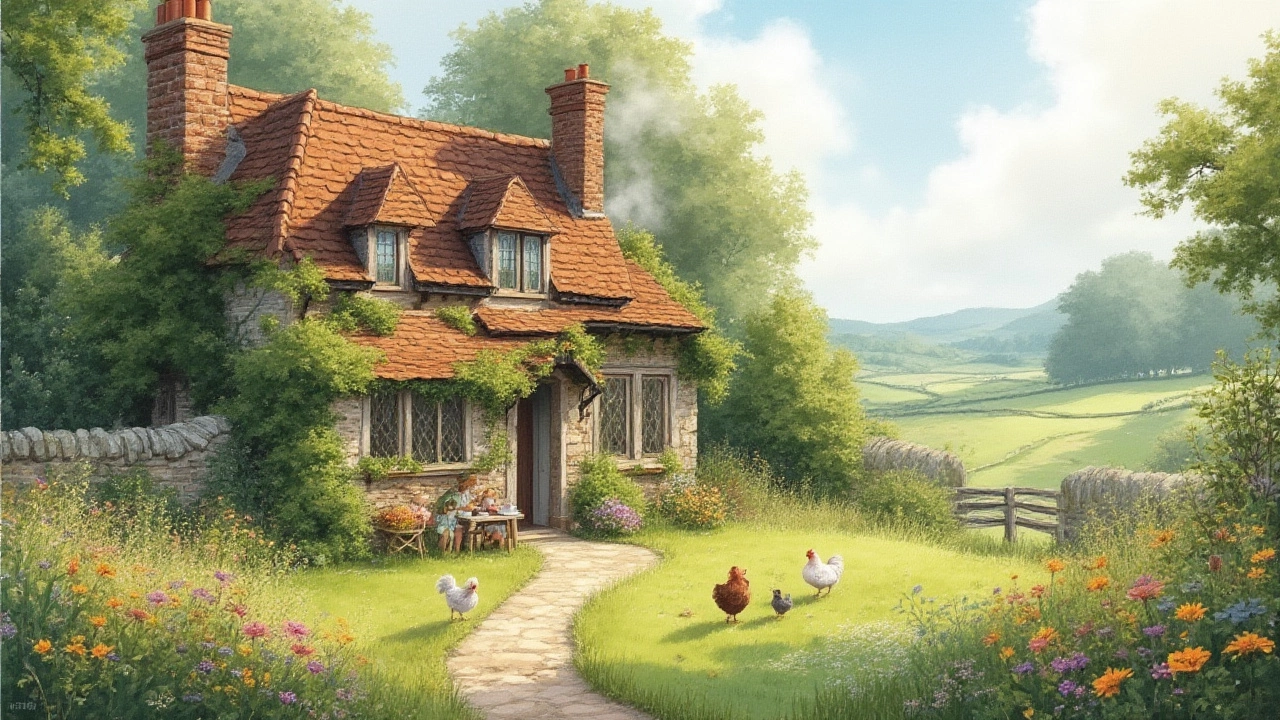Picture yourself sipping morning coffee in a cozy cottage, sunlight streaming over wildflowers outside while you listen to birds instead of city traffic. Maybe you’re wondering if this kind of life is just a fairytale sold on Instagram, or if it’s actually possible right now, five years into the 2020s. The truth? The dream of living in a cottage isn't some dusty relic. It’s real, it’s changing, and it’s a heck of a lot more nuanced than anyone lets on in those perfect photos. The question isn’t "can you," it’s "how."
What Does Cottage Living Actually Mean in 2025?
If you crave simplicity, cottage life is endlessly tempting. But before you sell everything and move, it helps to get honest about what a cottage is now, versus those storybook ideas. Back in the day, a cottage meant a small, rural home – sometimes with a thatched roof, often stuffed with character. These days? The meaning flips depending on where you are. In England, for example, the official government definition is a house smaller than 914 square feet (that’s 85 square meters, by the way). In the United States, realtors sometimes use the word "cottage" to mean anything from a two-bedroom fixer upper to a luxury lakeside cabin. Fun twist: the "tiny house" movement owes a lot to cottage aesthetics, but tiny houses are usually under 400 square feet and designed to be mobile.
People’s motivations for ditching urban life are real and on the rise. According to the Office for National Statistics, since 2020, the number of UK residents who’ve left city centers for rural villages has risen by over 12%. In the United States, the National Association of Realtors reported a 15% jump in rural property sales between 2020 and 2023. These aren’t boomers shuffling off to retirement – the biggest group making the shift is now people in their thirties and forties, with many young families leading the way. Why? Cheaper land, more space, access to nature, and, yes, the magic of the cottage aesthetic.
But let’s be honest: there’s no universal “cottage experience.” Some folks go off-grid and bake sourdough in wood-fired ovens. Others bring fiber broadband and run remote tech companies from their kitchen tables. You might grow outrageously charming flowers or just keep the yard barely mowed so you can head to the farmer’s market. Today, cottage living spans the spectrum between old-school rural grit and modern-day comfort. Live in a cottage – sure. But set your expectations right.
The Truth About Finding – and Affording – a Cottage
The quest for a picture-perfect cottage isn’t always easy. Ever tried to buy a 200-year-old stone house in the Cotswolds? You’re not the only one. In 2024, an average detached cottage in the English countryside sold for £415,000 (that’s about $520,000 USD). In Ireland, a similar property might cost €170,000-€350,000, while areas like rural Ontario list lakeside cottages for anywhere from $300,000 to over $1 million, especially if they’re winterized. Here’s a quick peek at average prices from last year's data:
| Country/Region | Average Cottage Price (2024) | Notes |
|---|---|---|
| England (Cotswolds) | £415,000 | Stone, detached, 2-3 beds |
| Scotland (Highlands) | £220,000 | Remote, often needs renovation |
| France (Dordogne) | €180,000 | Old farmhouses, often with land |
| USA (Vermont) | $350,000 | Rural, 2 beds, seasonal or year-round |
| Canada (Ontario, Muskoka) | $900,000 | Lakeside, modernized |
There’s a catch, though. A lot of “cute” cottages need serious work. Half the fun (and stress) is making it liveable. Reliable plumbing, a roof that doesn’t cave in from snow, double glazing for chilly winters—these things can turn a cheap listing into an expensive project. If you’re buying outside your own country, there’s red tape, too. From property taxes to local zoning laws, you’ll need to do more than romanticize. Pro tip: talk to neighbors and local agents, not just the slick online ads. You need the dirt – sometimes quite literally; those garden images can hide epic drainage problems.
And then there are rentals. More rural landlords are getting into short-term lets (thanks, Airbnb), shrinking the pool of places available for year-round rentals. You might land a six-month lease in Cornwall, but finding an affordable, long-term, pet-friendly cottage is like hunting for a unicorn – hard, but not impossible if you’re flexible and act fast. Sign up for local Facebook groups and small, regional property websites. Old-school networking (chatting at the weekly market, joining the village hall’s volunteer crew) often beats fancy apps.

Modern Realities: Everyday Life in a Country Cottage
Cottage living in 2025 mixes old and new in surprising ways. Yes, you can grow tomatoes and let your kids chase chickens. But plenty of cottage dwellers are also running wifi-powered businesses, ordering groceries online, and streaming Netflix during winter storms. Don’t expect to unplug unless you choose to. Rural internet access used to mean patience and frustration, but today fiber broadband is spreading fast in most countries, even out in the hedgerows – check if the property is already hooked up before you move, or be ready to budget a few thousand dollars for a satellite solution.
The flip side of peace and quiet is a real sense of isolation, especially in winter. Village shops still close early. Public transport can be patchy or nonexistent: you’ll likely need a car, and if the nearest mechanic is a two-hour round trip, you’ll start learning a lot about tire changes and oil top-ups. Old properties demand hands-on care, too. You’ll probably become best friends with the local plumber, roofer, and electrician. And cottage gardens? Lovely, but high-maintenance – wild roses and wisteria look after themselves, but lawns, hedges, and veggie patches need you more than Pinterest will ever warn you.
Healthcare can be trickier, especially in rural spots where the local doctor splits time between several villages. On the upside, stress levels tend to drop fast. Fresh air, wide-open views, and walks in the woods can change your mood in ways urban parks rarely do. If you have kids, small village schools are a real plus, though your teens might grumble about limited social scenes or having to take a bus each morning. As for work, remote jobs have cracked open the cottage lifestyle possibilities for tons of people who never could have moved out before – but if your job still means city commutes, be extra real about the costs (time and money) before signing that lease.
- Reliable internet is now a must-have for most cottage buyers under 50.
- Most cottage owners take up at least one new DIY skill within their first year (think basic carpentry, gardening, or woodstove management).
- According to a 2025 survey by Cottage Life magazine, 38% of cottage dwellers in the UK now work from home full-time.
- Please really talk to the locals before you move in – most villages have their own unofficial rules and habits that take time to learn.
Tips for Making Cottage Life a Reality
Ready to try cottage living? Here’s what actually helps, whether you’re moving next month or just daydreaming for now:
- Set your budget – and triple check renovation costs. Buying a fixer-upper? Get detailed surveys done. Hidden damp, roof repairs, and insulation can chew through savings fast.
- Prioritize connectivity. Ask sellers about current internet speeds, check with local providers, and factor in installation time or costs if you need upgrades.
- Think about year-round realities. Does the location get snowed in? How’s road maintenance? What’s it like at 4pm in January?
- Connect with the community early. Join local groups online or in-person, look for local events – being the “newcomer from the city” is easier if you’re proactive and kind.
- Rent before you buy if possible. A short-term lease or seasonal tryout lets you test drive the lifestyle before you commit big money or years of savings.
- Plan for pets and gardens. Not all landlords allow animals, and rural spots may come with wildlife challenges. (Yes, foxes really will carry away unsupervised chickens.)
- Research heating and utility costs. Old cottages can be shockingly expensive to heat; modern insulation and wood stoves help, but don’t expect city bills.
- Get ready for surprises. Country life throws curveballs – from broken boilers to runaway sheep. The more you adapt and laugh, the easier it gets.
Some folks discover cottage life isn’t the stress-free fantasy they’d hoped for, and that’s fine too – but for those who crave space, nature, and a tangible daily pace, it’s more than possible in 2025. The bottom line? Living in a cottage remains absolutely doable and can be wildly rewarding, if you drop the fairytale for something real and a little muddy, with cakes cooling on the counter and the promise of a wilder, slower tomorrow.
